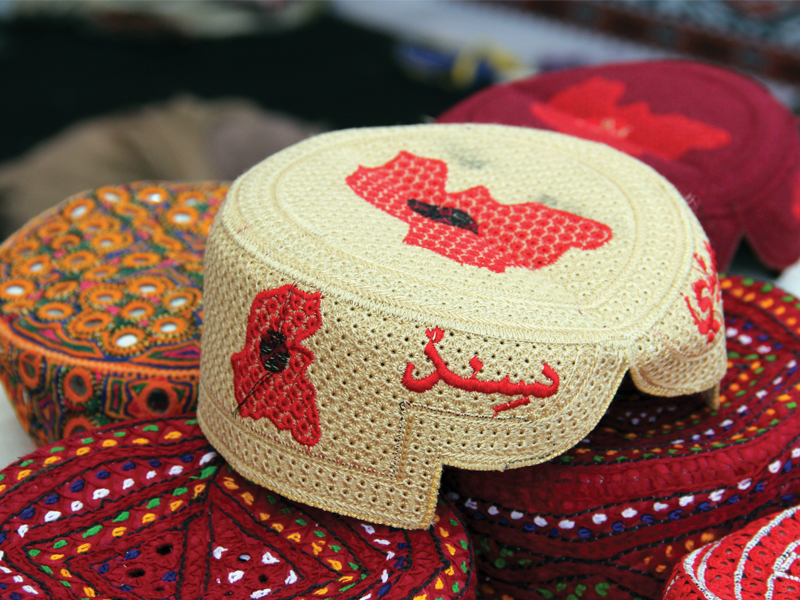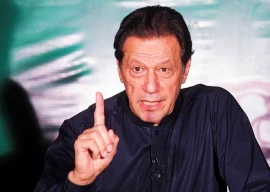
Dr Khuhro, speaking on Monday at the inaugural ceremony of the Second International Conference on 'Sindh through the Centuries' that was organised by the Sindh Madressatul Islam University (SMIU) at the Marriott hotel, said that this region is home to a large number of marginalised communities that have proved vital to the province's economy through the ages and have performed an important role.

"The Mohanas who plied the Indus in boats are the oldest of Sindh's communities but are often referred to as Punjabis," she said. "Maybe somebody can explain why or how they can be characterised as outsiders when they are part of the province's history?"
Dr Khuhro also referred to the recent floods and loss of soil fertility that have affected Sindh's economy and highlighted the importance of finding preventative measures. "We need to have more research in order to prevent environmental degradation," she said.
Encouraging more research on the topic, Dr Khuhro added that not a lot of work has been done on the social and economic history of Sindh's pre-colonial times. "No student or researcher will be short of subjects in this field, which also includes the much neglected subject of Sindh anthropology," she promised.
According to Archeological Investigation Unit researcher at Tokyo's Meiji University, Atshushi Noguchi, Sindh was the cradle of the Indus civilisation as well as the melting pot of various cultures and ethnic groups.
"Sindh keeps its unique position with its incredibly long human history. Hand-axes and cleavers, the oldest form of stone tools, found in Rohri could be the clues of the Afro-Asian connection of that time," said Noguchi, quoting his research paper 'Between the River and the Desert: The significance of Sindh over millions years of incredible human history'.
National Assembly opposition leader Syed Khursheed Ahmed Shah also underlined the need for more research on the Indus Valley and the importance of transferring that knowledge to the people.
"There are several aspects of history that are yet to be explored," he said, claiming that no one is sure who built Rani Kot. "Similarly, the history of Kotdiji also needs to be researched," he said in his address.
Shah also drew the attention of historians to the distortion of Sindh's history and cited the example of Muhammad Ali Jinnah's birthplace. "Jinnah was born in the Jhirak town of Thatta but textbooks incorrectly say that he was born in Karachi," he claimed.
SMIU vice-chancellor Dr Mohammad Ali Shaikh said that Sindh has been a cradle for civilisation from time immemorial and also underlined the need to celebrate its history. "Located between two great ancient civilisations - the South Asian and the Middle Eastern - Sindh enjoyed a degree of isolation throughout its history due to physical barriers on three sides."
The chief guest, Senate opposition leader Senator Aitzaz Ahsan, said that the Sindh of today is a society of immigrants and that the land embraced every single one of them. Aitzaz talked of his frequent visits to Mohen Jo Daro and said that he was impressed by the civic system of the ancient city.
The first international seminar on the topic was organised in Karachi in March 1975 under the patronage of the then PM Zulfikar Ali Bhutto.
Published in The Express Tribune, March 25th, 2014.
COMMENTS (2)
Comments are moderated and generally will be posted if they are on-topic and not abusive.
For more information, please see our Comments FAQ












































@Awan: The name Sindhu (Sindhu Darya) is older than you think it is. The term Sindhu comes from Sanskrit and is used in sacred Hindu text of Rigveda to represent the sacred Sindhu Darya and Rigveda was composed in 1100 - 1700 BC.
I hope ET publishes my comment.
“The Mohanas who plied the Indus in boats are the oldest of Sindh’s communities but are often referred to as Punjabis,” she said. Well infact Mohanas can be found in Punjab and i have met them on the banks of Chenab and infact they have sparse populations on the whole of Indus river from KPK, Punjab upto Karachi.
Actually historians made a huge blunder when they translated Indus river into "Daryae Sindh" in Urdu Language. Infact most of the Indus lies in Kashmir, KPK and In Punjab and a small part lies in Sindh. So I have met many Sindhis and unfortunately they are now referring to many Indus river origins and communities to Sindh and that is a pretty false hypothesis.
The Original Indus name and civilization in English refers to a River that flows from Tibet upto Karachi with a length of more than 3000 Kilometers. No Province or region can own this river and Indus valley civilization is also not confined to Sindh only.